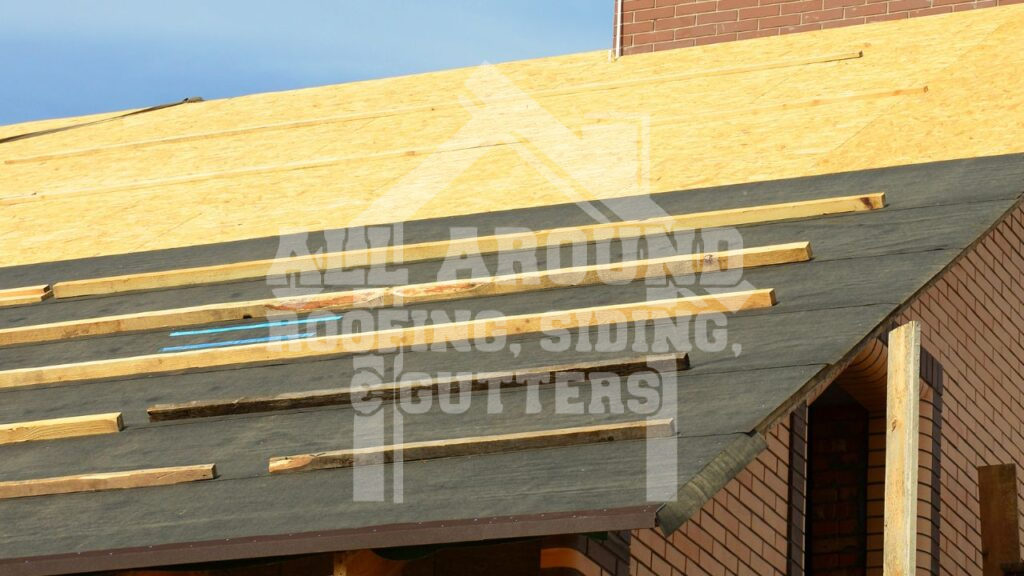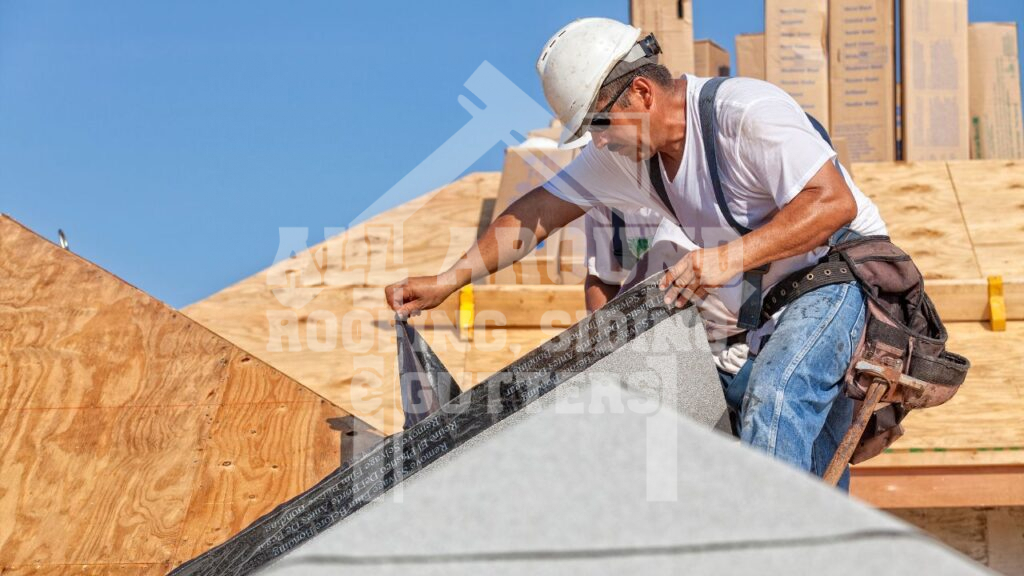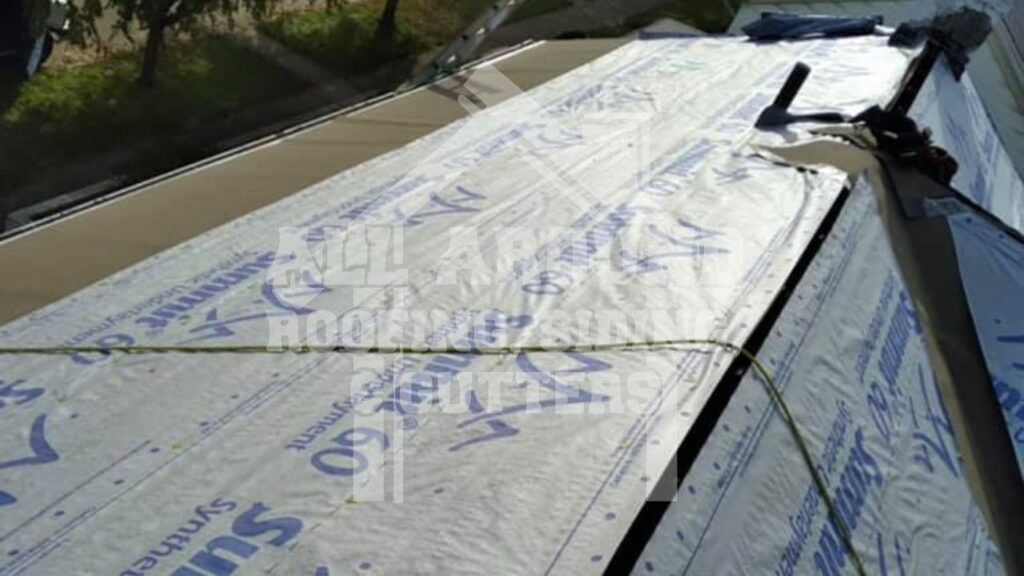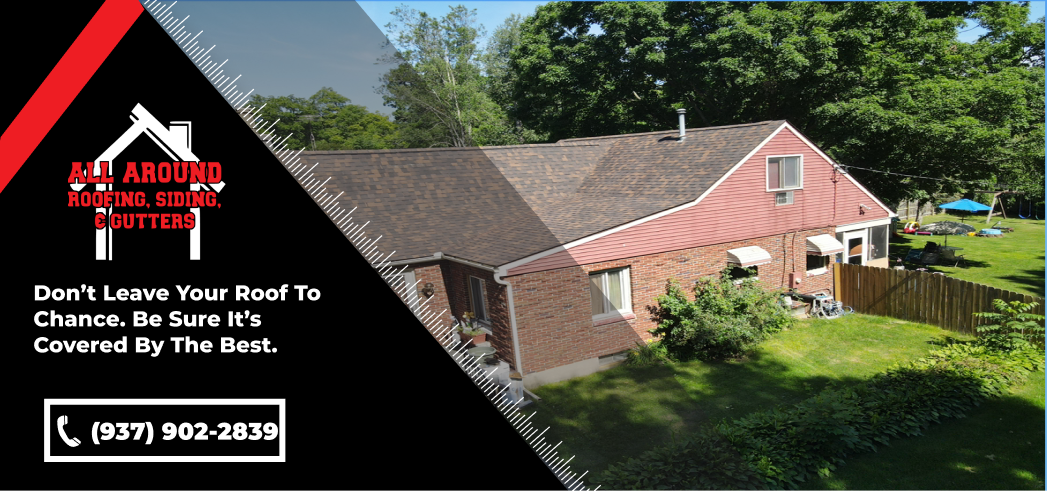Picture yourself in your home on a rainy night, enjoying a warm beverage while listening to the comforting sound of raindrops on your roof. You feel safe and secure knowing no leaks or dampness are creeping in. This sense of peace is all thanks to a quiet hero, the roof underlayment. It acts as a crucial shield against water damage, sandwiched between the protective layer of asphalt shingles and the roof deck.
To safeguard your home and peace of mind for years to come, it’s essential to pick the right type of underlayment tailored for asphalt shingle roofs. That’s why in this blog post, we’ll explain the best kind of roofing underlayment for that roofing system.
What Is The Best Underlayment For Asphalt Shingle Roofs?
There are three main categories in which roof underlayment is divided. Each has a set of benefits and drawbacks, is meant for a different application, and interacts with the roofing material, which in this case is asphalt shingles, in a different way. Let’s try to get a better understanding of which underlayment works best.
#1. Rubberized Asphalt Underlayment

Rubberized asphalt underlayment, also known as self-adhering roofing underlayment, is primarily made of rubber polymers and asphalt. It stands out because it has a sticky backing that sticks directly to the roof deck, creating a strong waterproof seal.
This type of underlayment is considered high-quality because of its outstanding ability to prevent water leaks, particularly in areas prone to them like around roof valleys, chimneys, and skylights. It’s also praised for its flexibility, as it can expand and contract without developing cracks, and it works really well at absorbing sounds too.
Even though it’s more expensive than other underlayment options, rubberized asphalt underlayment is preferred in regions with extreme temperature changes because it effectively reduces the risk of leaks.
Features
- Waterproof: It effectively prevents water from seeping through to the roof deck, particularly in vulnerable spots such as roof valleys.
- Flexibility: It can bend and adapt without cracking, even in extreme temperature shifts.
- Non-slip surface: Its texture provides added safety during installation.
- Increased coverage: Each roll covers a large surface area, reducing the number of rolls needed.
- Cost efficiency: While more expensive than traditional felt, it’s cheaper than other synthetic options.
- Sound absorption: It helps reduce noise levels.
- Easy installation: Requires fewer steps to install compared to other materials.
- Adaptability to various climates: It performs well in regions with significant weather variations.
#2. Synthetic Roof Underlayment

Synthetic underlayment, a newer option gaining popularity, is made from polymer materials like polypropylene or polyester. It’s tougher than felt paper, resists tears better, and is also lighter and easier to handle, which makes it a hit with DIY homeowners.
Since it’s made from woven or spun polyethylene or polypropylene fibers, it’s more durable, tear-resistant, and mold-resistant than other options. This makes it great at keeping water out and preventing leaks and damage to the roof deck.
Plus, it’s lighter, easier to manage, and quicker to install, cutting down on labor costs. Its lifespan is longer too, usually lasting 25 to 50 years compared to felt’s 12 to 20 years. Though it has a higher initial price tag, it’s seen as a smarter investment due to its higher rate of performance and durability.
Features
- High Heat Tolerance: It’s resistant to heat, making it suitable for hot regions.
- Eco-Friendly: Most synthetic underlayments are made from recyclable materials.
- Easy Application: Lightweight and flexible, it’s simple to handle and install, reducing labor costs.
- Reliable Water Resistance: While not as waterproof as rubberized asphalt, it still keeps water out effectively, especially when paired with ice and water shields.
- Durability: It’s tough, tear-resistant, and can endure up to 180 days of direct UV exposure.
- Lightweight: It’s much lighter than felt, improving job site productivity.
- Water Repellent and Mold Resistant: Unlike felt, it repels water and resists mold and mildew.
#3. Felt Roof Underlayment

Felt underlayment, also referred to as roofing felt, felt paper, or tar paper, is a traditional roofing material made from natural plant fibers (cellulose) and asphalt (bitumen), offering flexibility and water resistance.
Available in variants such as #15, and #30, with the latter being sturdier but less flexible, it’s commonly used with asphalt shingle and metal roofs. While it’s cost-effective, it may not match the durability and flexibility of modern alternatives like synthetic underlayment, which provides superior tear strength, water repellency, and mold resistance.
Features
- Affordability: Felt underlayment is the cheapest choice, appealing to those on a tight budget for roofing projects.
- Two Standard Variants: Felt underlayment comes in #15 and #30 options, allowing different durability needs to be met.
- Fire Resistance: Certain types of felt underlayment are treated with fire-retardant materials, offering an added layer of fire resistance to the roofing system.
- Vapor Permeability: Some felt underlayments allow for the passage of water vapor, which can help in managing condensation in the attic space, thus reducing the risk of mold growth and wood rot.
Also read: Synthetic Vs. Felt Underlayment: Which One Is Right?
Factors To Consider When Choosing Roof Underlayment
Before you make any final decisions, considering these factors helps you achieve a balance between suitability and functionality for your roofing project.
- Roof Slope: The steepness of your roof affects the type of underlayment needed, with low-slope roofs often requiring options that have better waterproofing qualities to prevent water leakage.
- Climate: Your local climate influences the best underlayment choice, with robust options recommended for storm-prone areas and breathable ones for hot climates.
- Building Codes: Check local building codes to ensure compliance, as adhering to regulations ensures safety and avoids legal issues. Some building codes will outline the type of underlayment required.
- Material Compatibility: Ensure the underlayment is compatible with your chosen asphalt shingles to prevent degradation or reduced lifespan of the roofing system.
- Manufacturer’s Recommendations: Follow the manufacturer’s guidelines for underlayment installation, as it can impact warranty claims.
Finding Quality Roof Underlayment
Finding a quality roof underlayment product is crucial for protecting your home from harsh weather and supporting asphalt shingles. Here’s what quality entails:
- Material: High-grade underlayments use materials like synthetic polymers or fiberglass-reinforced felt for strong water resistance and durability in extreme climates.
- Adhesion and Fire Resistance: Top-quality underlayment ensures excellent adhesion of asphalt shingles and enhances fire resistance.
- Warranty: A long manufacturer’s warranty indicates confidence in product quality.
Breathability is also important for performance, allowing moisture to escape while keeping external moisture out, improving energy efficiency, and preventing mold growth.
Whether you’re remodeling your roof or replacing shingles, prioritize premium underlayment to optimize the longevity and functionality of your roofing system. Consider material composition, warranty length, and breathability for the best results.
How To Install Roof Underlayment
Roof underlayment installation is crucial for a durable roof, and the method of installation depends on the type chosen. Here are common installation methods for asphalt shingle roofs, and remember that hiring a professional for the task is the best way to ensure it protects your home for years to come.
1. Staple Down Method:
With this method, the underlayment is fastened to the roof deck with staples. Proper placement and balance are key, with approximately one staple per square foot recommended to avoid weak holds or damage.
2. Nail Down Method:
Underlayment is secured with nails, providing extra strength. Care is needed to prevent over-penetration and potential damage to underlying structures. Using 1-inch roofing nails is typical in order to form a solid barrier against wind uplift.
3. Self-Adhering Method:
Peel-and-stick underlayment features a sticky base layer that adheres instantly to the decking surface once the protective film is removed. This method is convenient and offers excellent waterproof properties without the need for staples or nails.
Regardless of the method, attention to overlap is crucial. Steeper roofs require less overlap (around 2 inches), while flatter surfaces may need more (up to 6 inches) for added protection.
Precision, patience, and expertise are essential for any installation method due to their intricacies. It’s essential to align the method and product with specific roofing needs, architectural design, weather conditions, and the overall goal. Safety should always be prioritized during the installation process as well.
Install A New Roof Today With Expert Help!
Simply put, there’s no one-size-fits-all answer when it comes to choosing the best underlayment for asphalt shingles. Your choice depends on your specific needs, budget, and specific details involving your roofing project. This makes it essential to research different products carefully and consider their sizes and thicknesses before making a decision.
If you need expert advice or assistance with your roofing project, don’t hesitate to contact All Around Roofing, Siding & Gutters for their professional roofing services. We are available to assist you in Dayton, or the surrounding area of Ohio if you require any residential roofing services. For a free consultation and to discuss your roofing needs, give us a call at (937) 902-2839.


